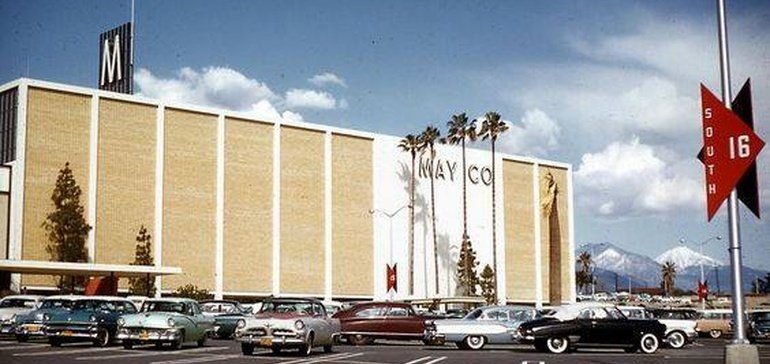
6 numbers that explain the fate of department stores
Too many stores, fierce competition and ebbing apparel sales are just the beginning.
Department stores were the 20th century’s marvelous shopping destination. Retailers that were filled with varied and often unique merchandise, offering high levels of convenience and attentive customer service.
That heyday is over. The model, which went from dominating city downtowns to dominating malls, is beset by outside forces and in some cases by the retailers’ own missteps. It’s not clear yet whether it can be successfully updated for the 21st century — players like Nordstrom, Macy’s and Saks are trying.
Here are six key metrics that serve as clues into department stores’ woes:
100 stores
The number of Macy’s locations closed since August 2016, as well as the number of stores that off-price retailer Ross opened in 2019 alone
In the mall era, retailers were giddy about opening locations, sprinkling their stores throughout the country in malls of all sizes. Those shopping centers were anchored by department stores — based on the notion that those retailers were major attractions that would naturally share their foot traffic with specialty stores.
That worked for a while, but ultimately led to overbuilding and over-acquisition, and the poster child for that has been Macy’s. In 2005, when the May Company merged with Macy’s owner Federated (later renamed Macy’s), the company boasted of having 950 department stores. The idea, backed by then-Macy’s CEO Terry Lundgren, was to achieve scale, efficiencies and synergies, experts say. Instead, it ushered in sameness.
In the past few years, Macy’s has assiduously worked to undo that expansion, closing up 100 stores in a brick-and-mortar contraction that, despite executives’ insistence to the contrary, some analysts say is far from over.

$19 billion
Projected off-price sales by 2021
Off-price retailers like Ross and the banners run by TJX evolved from a department store concept that allowed thrifty customers to buy factory seconds, closeouts, returns and last season’s leftovers at deep discounts. In fact, most department stores run their own off-price businesses, like Nordstrom Rack, Saks Off Fifth and Macy’s Backstage.
The concept is now a thriving retail segment in its own right, and many off-pricers, in addition to those castoffs from department stores, now sell lower-priced clothing made exclusively for them. The inventory turns over regularly, making for a treasure hunt atmosphere that attracts shoppers of all income levels, in economies good and bad.
Thanks in part to solid fundamentals like a robust merchandise pipeline, a healthy consumer base and plenty of runway for brick-and-mortar expansion, the segment is on pace to reach $18 billion to $19 billion of incremental sales by 2021, according to a 2017 note on the sector from JPMorgan analysts. Around the same time, Moody’s Investors Service released a report saying much the same thing, crediting the retailers’ significant scale, flexible purchasing, strong and expanding vendor relations and adaptable real estate strategies, for their endurance.
$20.4 billion
The amount department store sales have dropped over the past five years
The rise of off-price retail tracks closely with the decline of department store sales. “Off-price retailers continue to outperform other sectors of the U.S. retail industry largely because they offer the kind of lower-cost, higher-value products and shopping experience many consumers are looking for,” Moody’s analyst Christina Boni said in an email in 2017. “Off-price stores are far outstripping department stores, which in contrast are still struggling with outmoded formats and supply chains that can’t keep pace with customer demand.”
Department store sales fell 23.5% between 2013 and 2018, from $99.6 billion to $76.2 billion, according to Euromonitor International data cited in a Coresight Research report emailed to Retail Dive. Additionally, sales in the sector are projected to decline to $56.6 billion in 2023, the report found.

$14 billion
The amount in sales that Costco’s Kirkland Signature private label outpaced all of Macy’s nationwide sales last year
It’s not just off-pricers. Mass merchants like Walmart, Target and Costco are also increasingly attracting consumers who, in a different era, may have headed to a department store.
“[Macy’s] model is unsustainable and they lose market share every day that goes by,” Nick Egelanian, president of retail development firm SiteWorks, said in an interview. “At $25 billion, and falling, Macy’s is about a sixth the size of Costco, and Costco does more volume in its private label Kirkland business — which is something like $30 billion — than the entire Macy’s chain. Costco’s is a giant business with huge loyalty — part of the fabric of the way America shops. Coscto, TJX and Walmart are the three greatest retailers in America.”


















